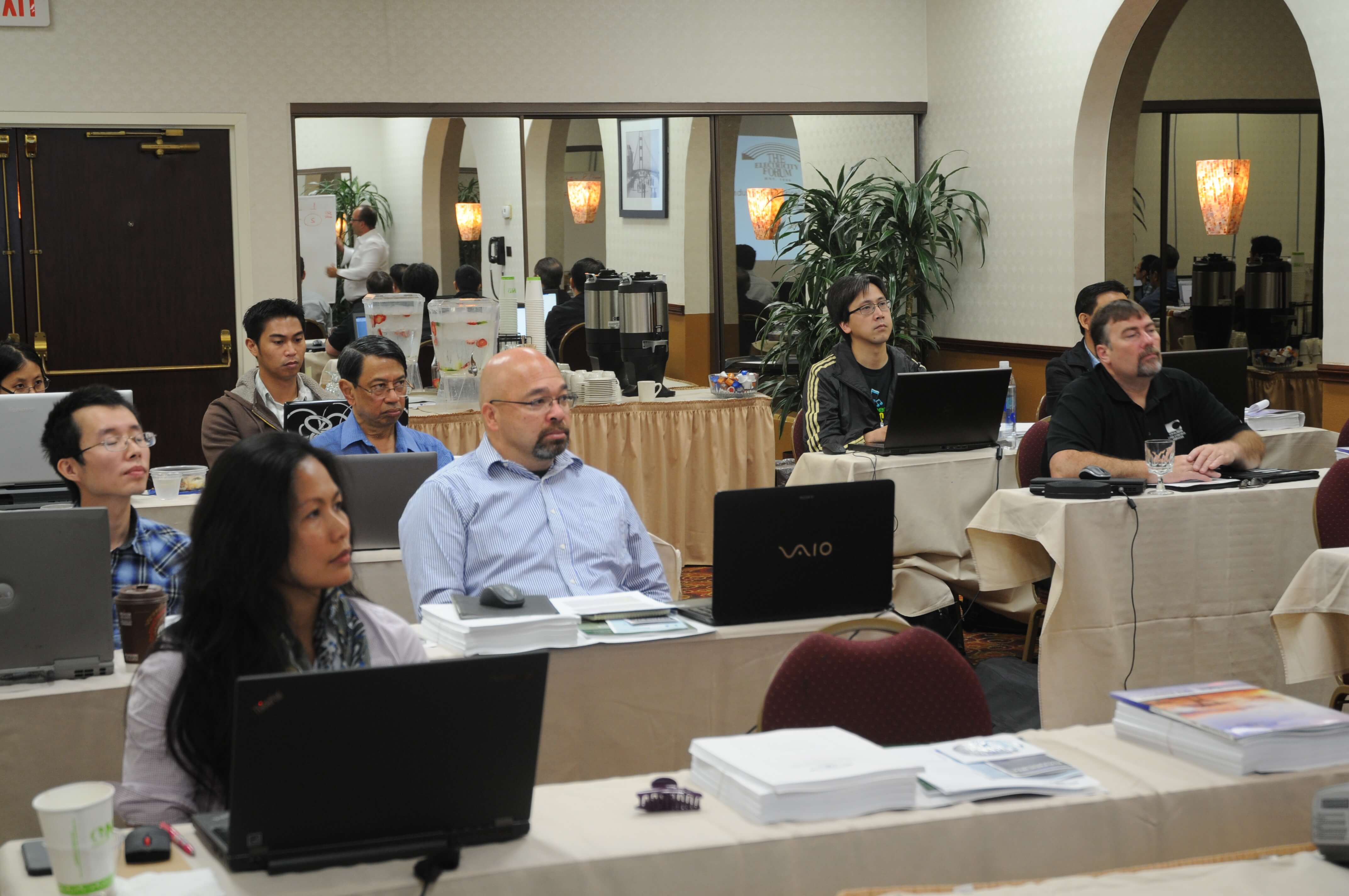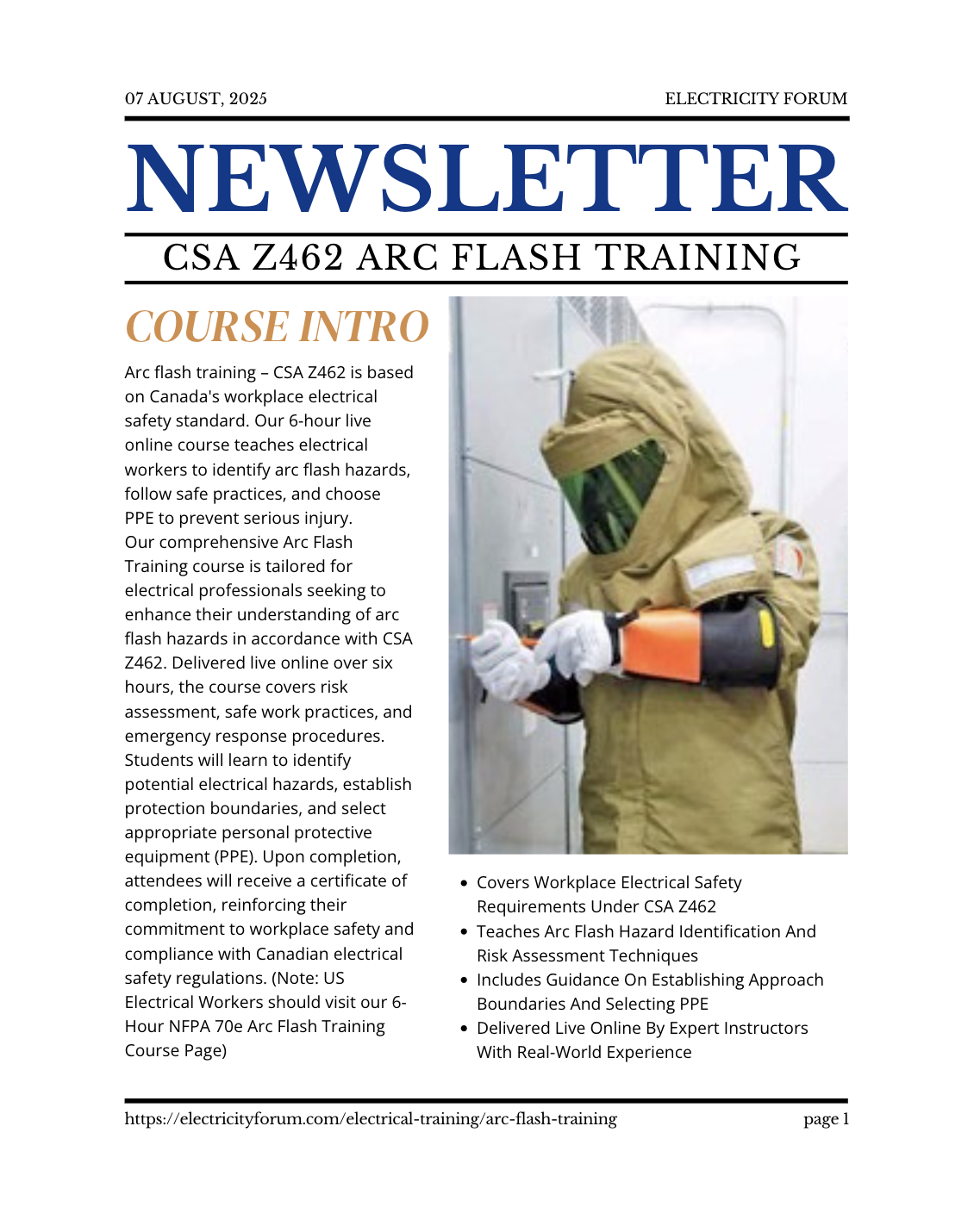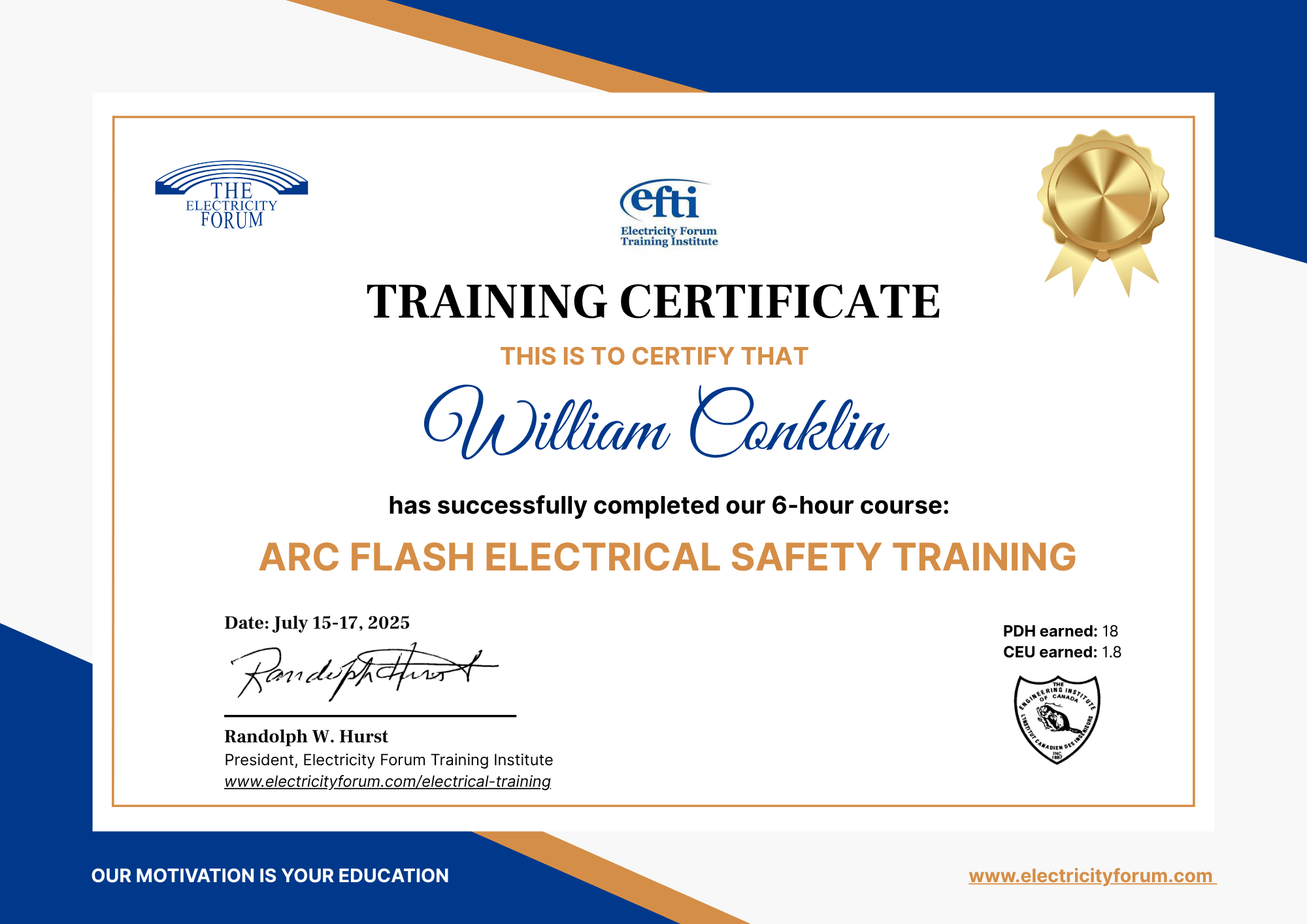6-Hour Live Online Advanced Electrical Safety Training Course Outline
Instructor
John Robin, Arc Flash/Electrical Safety Consultant, The Electricity Forum
1. Co-coordinating Company Safety Standards with Occupational Health and Safety Management Standards
- Electrical accidents are one of the 4 most common causes of death and serious injuries in the workplace.
- Use of quality management system to reduce and eliminate risk at workplace.
- Remediation of hazards for a safer workplace.
2. Electrical maintenance, and Company safety standards
- What type of Maintenance system works best for your company?
- Electrical drawings, and how not having up to date drawings can impact safety and production.
- Root cause analysis and how to get to the real reasons behind equipment failure.
3. Safe approach Zones
- How approach zones are defined, and what standards are used to define them.
4. Methods for determination of Incident energy and arc flash boundaries
- Equations to define electrical safety zones.
- How voltage classes are determined in electrical equipment.
5. Company Electrical safety programs
- Planning to include all personnel that are subjected to electrical hazards in your plant.
- Getting your crews to “buy in” to the safety program developed within an organization.
- Setting up a logical sequence of introduction for safety procedures within a workplace.
6. Risk assessments
- Identifying hazards
- Organizing tasks in a logical sequence
- Estimating risk in the course of conducting a procedure
- Appropriate risk reduction techniques
7. Lockout programs
- Definitions that impact lock-out procedures
- Choosing your companies lock-out locks
- Identifying lock points on all company equipment
8. Selection of PPE and changes in 2015
- Two category standard clothing system
- Looking at tables in CSA standard, and impact on day to day working apparel for non-electrical, and electrical workers.
9. Job briefing and tailboard meetings notes
- What to include in daily briefings
- How to keep up to date with work conditions, and make changes as jobs progress
10. Working within the limited approach Boundary of overhead or buried power Lines and equipment
- Distances to use when working within boundaries of High Voltage lines
- Delineation of approach distances for workers with boundaries of H.V. lines
- Operation of equipment within this zone.
- Crane operations within HV zones
- Excavations in the vicinity of HV zones
- Over height Vehicle operations in HV zones
11. Design considerations
- Responsibility of facility operators to design safety into equipment
- Design and construction of operating equipment
- Risk reduction methods
12. Arc flash and shock warning labels
- Standard for producing Arc Flash warning labels
- Electrical code requirements for warning labels
- Detailed label
13. Substation systems and equipment
- Safe performance of substation tasks in or in the vicinity of operating substations.
- Limits of approach, and changes due to environmental conditions
- Heat flux rates in HV equipment
- Safe grounding practices
- Disconnects and fuses
- Transformers
- Cable vaults
- insulators
14. Shock injuries from electrostatic discharges
- Identification of areas of potential shock hazards from static discharges
- Liquids and production of electrostatic shock
- Control methods
15. Workplace electrical Safety
- Human error and cause of electrical accidents
- Defining errors causing incidents in the workplace
- Procedure for workers to progress a task
- Job planning to build safety into every job
- Tool box talks
- Post job evaluation of the success (or failure) of job plans
- Communication during tasks
- Identification of equipment being worked on during switching operations
- Supervisor responsibilities during electrical tasks
- Worker responsibilities during electrical tasks
COURSE TIMETABLE
Both Days:
Start: 8:00 a.m.
Coffee Break: 10:00 a.m.
Lunch: 12:00 noon
Restart: 1:15 p.m.
Finish: 4:30 p.m.

















